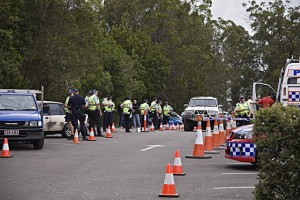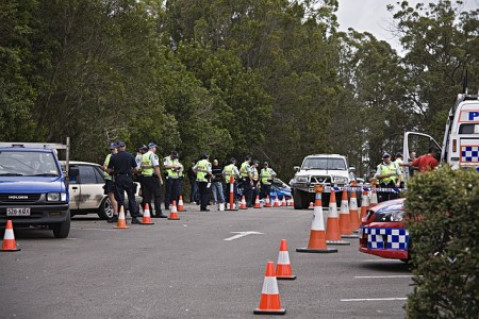Widgetized Section
Go to Admin » Appearance » Widgets » and move Gabfire Widget: Social into that MastheadOverlay zone
Rookie Review: Lessons From an Emergency Planning Exercise
The views expressed are those of the author and do not necessarily reflect the views of ASPA as an organization.
By Emily Paulson
May 5, 2015
 I recently had the opportunity to volunteer for an emergency planning exercise. Since this is a future career field, I was fascinated by the process. There were participants from a variety of city and county emergency service agencies, as well as a private security company. I learned a lot about inter-agency relationships. There are many moving pieces in crisis management and the organization and mobilization of such a diverse group is no easy task.
I recently had the opportunity to volunteer for an emergency planning exercise. Since this is a future career field, I was fascinated by the process. There were participants from a variety of city and county emergency service agencies, as well as a private security company. I learned a lot about inter-agency relationships. There are many moving pieces in crisis management and the organization and mobilization of such a diverse group is no easy task.
The lessons I learned from the exercise can be applied to any inter-agency relationship or organizational crisis. I’m hoping they’ll be valuable to you, too. Here are the five biggest takeaways from the exercise:
1. Communication is the most critical piece of the puzzle.
For communication to be effective, both the sender and receiver have to actively participate. “Communication is one of those areas that can always be improved,” said the emergency manager in charge of the exercise. I couldn’t agree more.
Communication is vital because it ensures everyone understands the plan and rules in the same way. If communications to staff surrounding crises are inconsistent, employees might end up fighting each other on process and logistics. In critical, crisis moments, there really isn’t time for that. Because we serve the public, there’s always too much at stake. An inter-agency situation can make communication planning even more difficult, but possibly more important, too.
2. Practice should be taken seriously.

Don’t think about safety drills or required trainings as inconvenient. Often the fire alarm goes off and suddenly no one wants to be taken away from their work. Even though we think we already know the information in these lessons or the exercise isn’t teaching us about situations we’ll have to deal with, we should take them seriously. The content is important enough that every single person who works in your organization has to learn it. That’s saying something, isn’t it?
As one of the emergency responders at the exercise said, “There are so many scenarios we don’t get to plan for – don’t get to practice. That means everyone here should be thankful they get to go through what an event like this could look like, because it’s going to help us take our preparation to the next level.”
3. Inter-agency relationships are a good thing.
While there are exceptions, most public servants work with people from other organizations. Sometimes this creates tension. Given the prevalence of inter-agency work, I think we should try to get over that hurdle.
Instead of thinking of those relationships as obstacles or inconveniences, think of them as opportunities. They are opportunities to learn about another agency and the bigger picture. Opportunities to represent your own organization well and opportunities to learn from others’ best practices.
Inter-agency relationships help us stay on top of our game, protect us from groupthink, encourage us to have open and collaborative minds and creating super additivity in our output – That means that two people with diverse personal or professional backgrounds are going to generate greater output than two people with similar backgrounds.
4. Planning matters.
Planning is so important. Fire, law enforcement, private security, media relations, emergency medical services and others came together to achieve a common goal during the exercise. There is no way the day could have gone as well without extensive planning. Taking time to plan things the right way, with thorough intention and care, saves time in the long run. When a good blueprint is in place, we can spend less time filling in gaps and more time supporting our missions.
“It’s amazing how many things everyone had to think through to make today happen,” said one of the other exercise volunteers. “So much could’ve gone wrong that didn’t and I feel like good planning must be 90 percent of that.”
5. Public opinion impacts success.
When the public is confused about your agency’s actions because they are feel they are being kept in the dark, there’s too much room for them to fill in the blanks with speculation. Have a media plan. Know what to say to reporters. Know what to say to your friends. Establish consistent messaging so that others in your organization know the plan.
In class, we have been learning that public opinion can have a huge impact on an agency’s ability to provide efficient services. With emotions running high, as they inevitably do in crisis situations, having control over your public narrative can be the difference between being considered successful or unsuccessful.
Author: Emily G. Paulson is a content marketing manager in Minneapolis, where she moonlights as an MPA student at Hamline University’s School of Business. She’s carving out a career in public safety and community outreach and believes in firm handshakes and shameless smiles. Contact her at [email protected].






Follow Us!